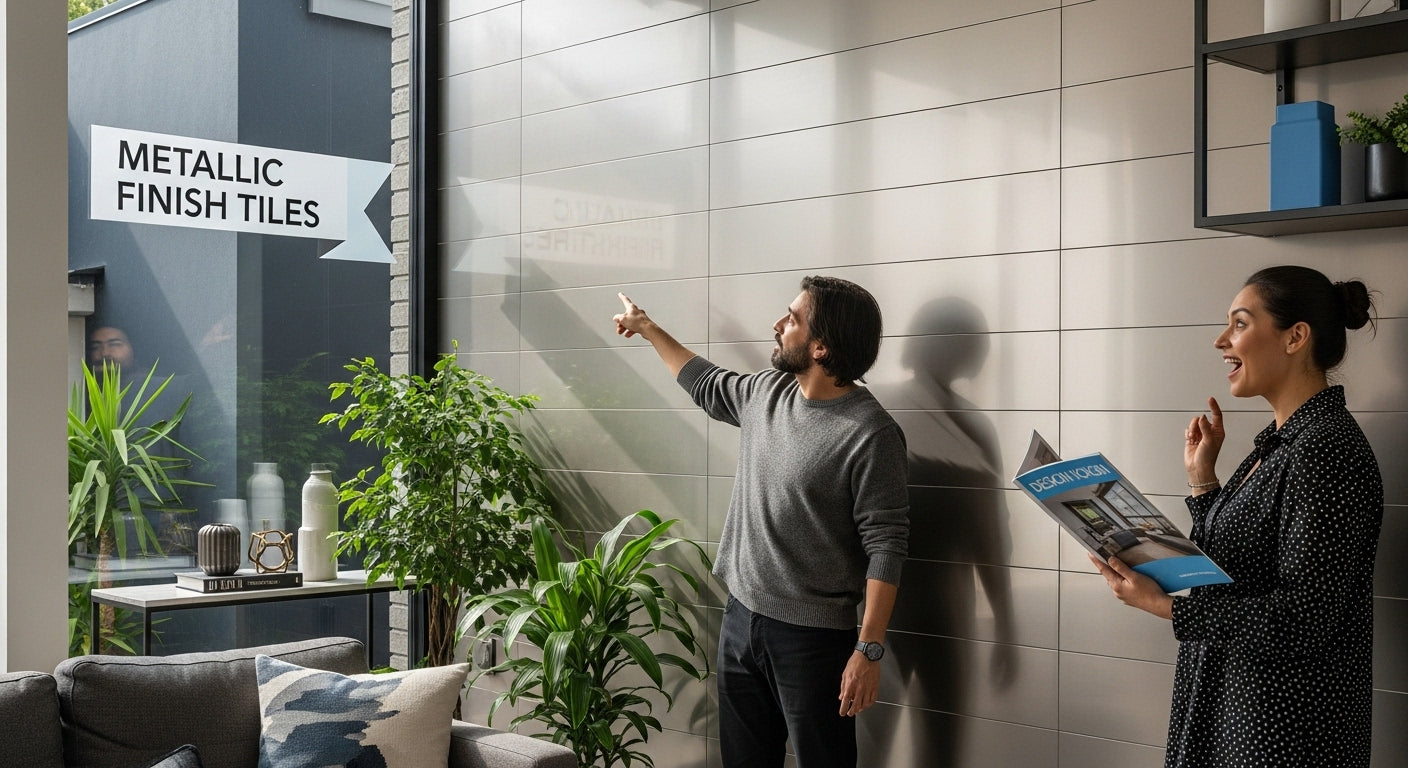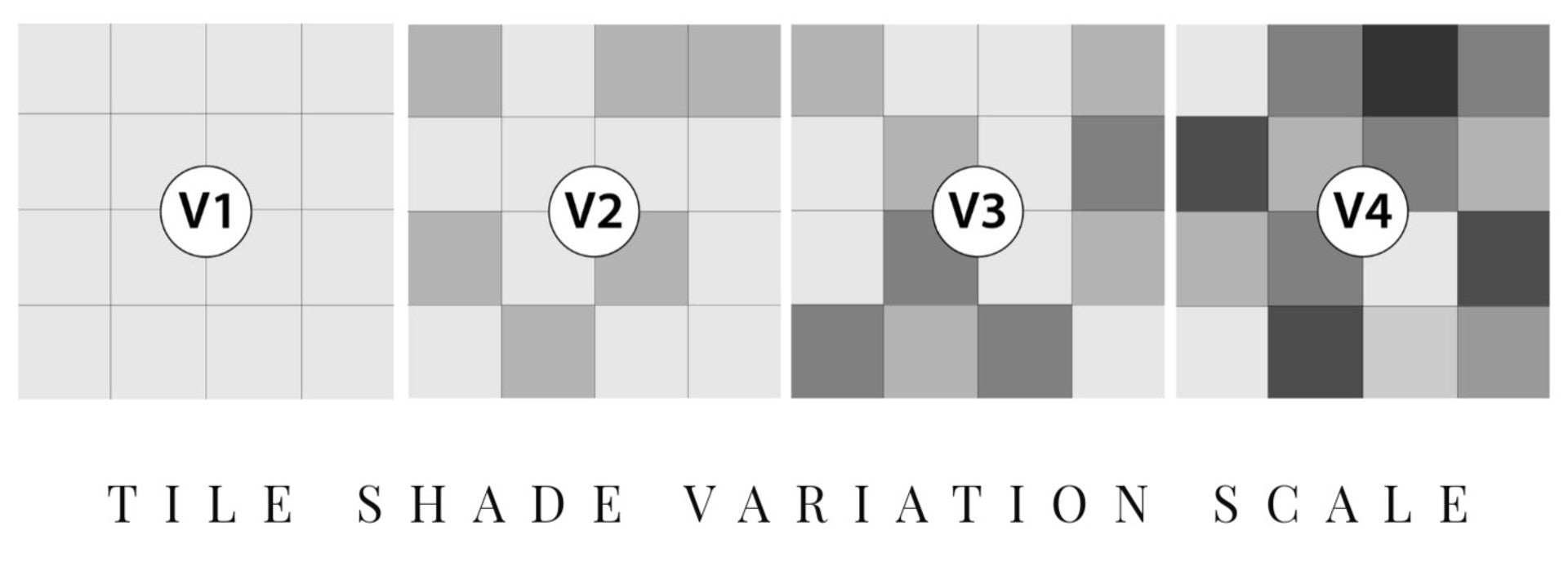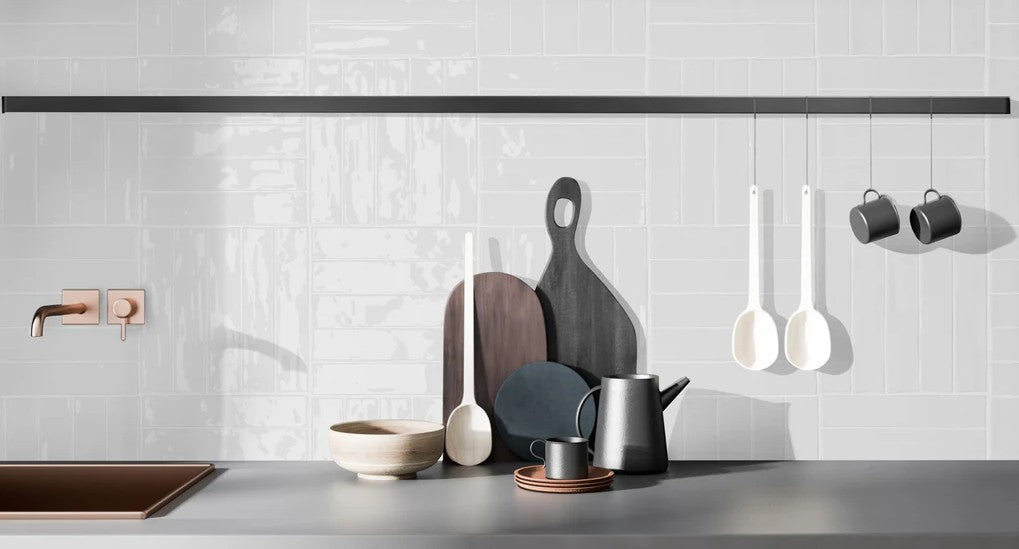Metallic finish tiles are popping up everywhere in stylish homes and modern offices, turning plain walls and floors into something you actually stop to admire. Most people think tiles are just about texture or color. Not even close. Some metallic finish tiles can mimic copper, silver, and stainless steel finishes so closely that designers get nearly unlimited creative options. These tiles are changing the way we think about surface design.
Table of Contents
- What Are Metallic Finish Tiles And Their Characteristics?
- The Benefits Of Using Metallic Finish Tiles In Design
- How Metallic Finish Tiles Influence Interior Aesthetics
- Materials And Manufacturing Processes Behind Metallic Finish Tiles
- Practical Applications Of Metallic Finish Tiles In Various Settings
Quick Summary
| Takeaway | Explanation |
|---|---|
| Metallic finish tiles enhance visual intrigue. | Their reflective surfaces create depth and dynamic lighting effects unlike traditional tiles. |
| Durability is a key feature. | Specialized coatings improve resistance to moisture and wear, ensuring long-lasting beauty. |
| Versatile applications abound. | Suitable for both residential and commercial spaces, they elevate aesthetics in various settings. |
| Metallic tones evoke emotional responses. | Different finishes influence feelings of luxury and sophistication in interior design. |
| Strategic placement maximizes light effects. | Properly positioned tiles can enhance natural light, making spaces appear larger and more inviting. |
What are Metallic Finish Tiles and Their Characteristics?
Metallic finish tiles represent a sophisticated design element that transforms ordinary surfaces into extraordinary visual experiences. These specialized tiles incorporate metallic elements or coatings that create a unique aesthetic characterized by reflective, shimmer like qualities that capture and redirect light in stunning ways.
Defining Metallic Finish Tile Composition
Metallic finish tiles are engineered using advanced manufacturing techniques that integrate metallic pigments or metallic surface treatments into traditional tile materials. Research from Metallurgprom highlights that these tiles typically involve cold-rolled steel sheets with polymer coatings, enabling complex visual and functional properties.
Key characteristics of metallic finish tiles include:
- Highly reflective surface that creates dynamic lighting effects
- Enhanced durability through specialized protective coatings
- Versatile design options ranging from subtle shimmer to bold metallic statements
- Resistance to environmental degradation
Design and Functional Applications
Metallic finish tiles offer remarkable versatility across residential and commercial spaces. Whether used as accent walls, kitchen backsplashes, or contemporary flooring solutions, these tiles provide a modern architectural statement. For those interested in exploring complementary design options, read more about tile finish variations.
The manufacturing process involves precise application of metallic pigments or thin metallic layers onto ceramic, porcelain, or steel substrates. This careful engineering ensures that the tiles maintain structural integrity while delivering extraordinary visual depth and complexity. Metallic finish tiles can mimic metals like copper, bronze, silver, and stainless steel, providing designers and homeowners unprecedented creative flexibility in surface treatments.
The Benefits of Using Metallic Finish Tiles in Design
Metallic finish tiles transcend traditional design boundaries, offering architects and homeowners innovative solutions that blend aesthetic appeal with exceptional functional performance. These sophisticated surface treatments provide transformative design possibilities that elevate interior and exterior spaces.
Aesthetic and Visual Advantages
The primary allure of metallic finish tiles lies in their extraordinary visual dynamics. Unlike traditional tile surfaces, metallic finishes create depth, dimension, and visual intrigue through their unique light-reflecting properties. They capture and manipulate light in ways that traditional materials cannot, generating stunning visual effects that change subtly with ambient lighting conditions.
Key aesthetic benefits include:
- Creating dramatic visual focal points in any design environment
- Generating subtle shimmer or bold metallic statements
- Complementing contemporary and minimalist design philosophies
- Offering unprecedented design flexibility across multiple architectural styles
Functional Performance and Durability
Research from the Directory of Open Access Journals highlights metals’ exceptional qualities of strength, endurance, and textural variety. Metallic finish tiles leverage these inherent material characteristics, providing surfaces that are not just visually stunning but also remarkably resilient.
Beyond aesthetic appeal, these tiles offer substantial practical advantages. Explore innovative tile design options for your next project that combine style with superior functionality. The specialized polymer coatings and metallic treatments enhance tile performance, delivering superior resistance to moisture, temperature variations, and mechanical stress.
Moreover, metallic finish tiles can provide additional benefits such as improved hygiene. Certain metallic treatments, particularly those incorporating silver or copper nanoparticles, can offer inherent antimicrobial properties, making them an excellent choice for spaces requiring enhanced cleanliness and infection control.
How Metallic Finish Tiles Influence Interior Aesthetics
Metallic finish tiles represent a transformative design element that goes beyond traditional surface treatments, acting as powerful visual storytellers within interior spaces. These sophisticated materials manipulate light, color, and perception in ways that fundamentally reshape architectural environments.
Light Manipulation and Spatial Perception
The unique optical properties of metallic finish tiles enable extraordinary spatial transformations. By capturing and reflecting light dynamically, these tiles create visual depth and perceived dimensionality that traditional materials cannot achieve. Their reflective surfaces can make small rooms appear larger, brighter, and more expansive, effectively becoming an architectural tool for spatial enhancement.
Key visual manipulation techniques include:
- Strategic placement to maximize natural and artificial light reflection
- Creating visual continuity between different architectural zones
- Generating subtle color shifts based on viewing angle and lighting conditions
- Introducing depth and complexity to otherwise flat surfaces
Design Style and Emotional Response
Research from contemporary design studies demonstrates that metallic finish tiles transcend mere decorative function, actively influencing emotional and psychological responses within a space. They can evoke feelings of luxury, modernity, and sophistication through their nuanced visual properties.
Explore innovative geometric design possibilities that complement metallic finishes and enhance their aesthetic impact. Different metallic tones trigger distinct emotional responses: copper suggests warmth and organic connection, silver communicates sleekness and contemporary precision, while bronze delivers a sense of timeless elegance.
To help you quickly compare different metallic effects discussed in the article, here is a table outlining the main visual and emotional qualities associated with popular metallic tones.
| Metallic Tone | Visual Qualities | Emotional Response |
|---|---|---|
| Copper | Warmth, organic shimmer | Invokes warmth and natural connection |
| Silver | Sleek, highly reflective, cool sheen | Feels contemporary and precise |
| Bronze | Deep, rich, traditional metallic look | Conveys timeless elegance |
| Stainless Steel | Polished, modern, smooth | Suggests sophistication and modernity |
By carefully selecting metallic finish tiles, designers can craft environments that are not just visually striking but emotionally resonant, transforming spaces from mere functional areas into compelling narrative experiences.
Materials and Manufacturing Processes Behind Metallic Finish Tiles
Metallic finish tiles represent a sophisticated fusion of advanced materials science and precision manufacturing techniques. The intricate process of creating these dynamic surfaces involves multiple complex stages that transform standard tile substrates into extraordinary design elements.
Base Material Selection and Preparation
The foundation of metallic finish tiles begins with carefully selected base materials. Manufacturers typically utilize high-quality ceramic, porcelain, or steel substrates that provide optimal structural integrity and surface receptivity. These foundational materials undergo rigorous preparation, including precise surface cleaning, smoothing, and priming to ensure maximum adhesion of metallic treatments.
To better understand the manufacturing and material distinctions behind metallic finish tiles, the following table breaks down their primary base materials and corresponding characteristics.
| Base Material | Structural Integrity | Surface Receptivity | Common Uses in Metallic Tiles |
|---|---|---|---|
| Ceramic | Good | High | Walls, light-traffic floors |
| Porcelain | Excellent | High | Floors, showers, accent walls |
| Steel | Superior | Moderate | Commercial spaces, unique wall features |
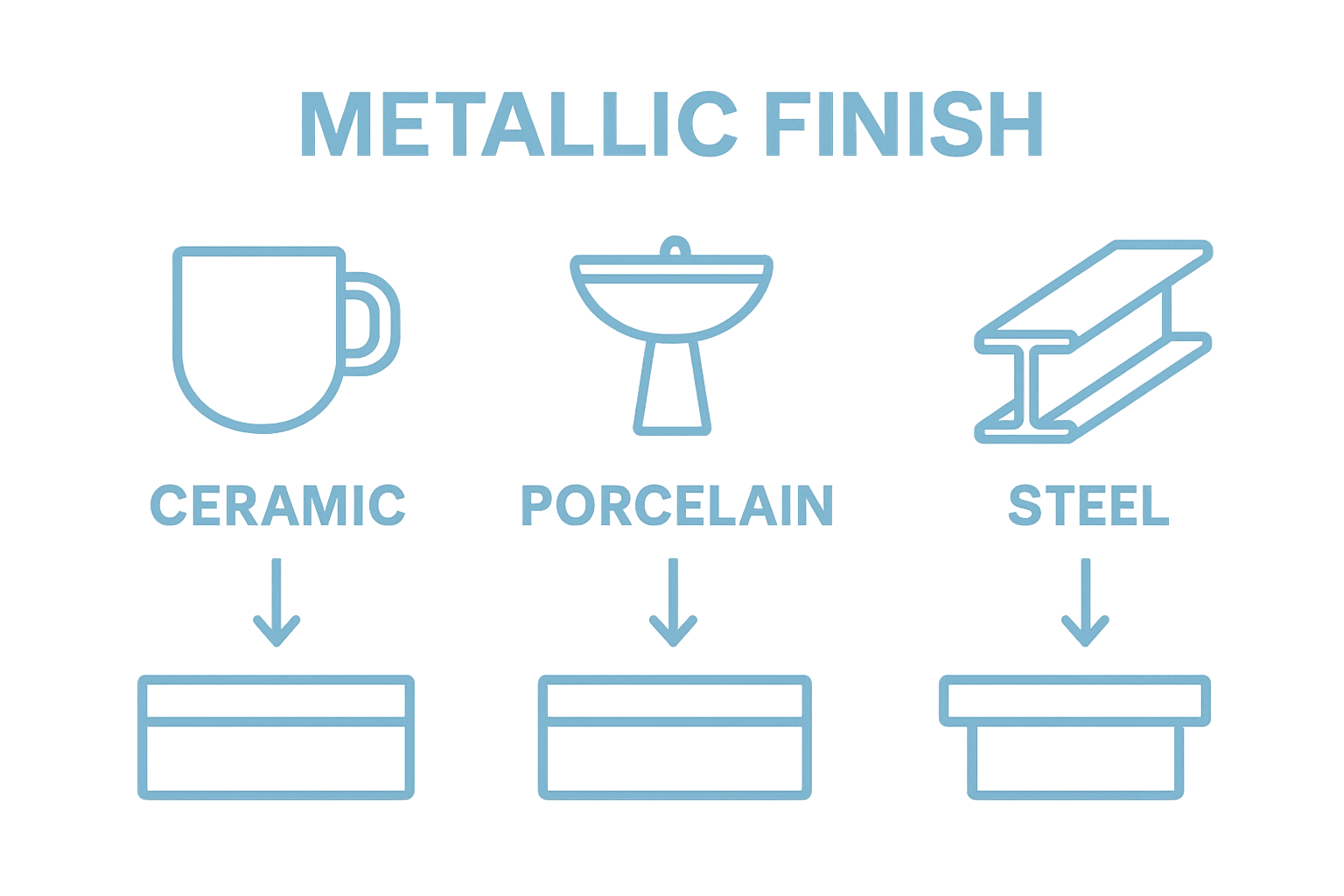
Key substrate preparation considerations include:
- Achieving uniform surface texture
- Eliminating microscopic imperfections
- Creating optimal molecular bonding conditions
- Ensuring consistent material density
Advanced Surface Treatment Techniques
Research from the New Jersey Institute of Technology reveals multiple sophisticated techniques for applying metallic finishes. These methods include screen printing, digital inkjet application, and specialized reduction firing processes that create complex metallic effects.
Learn more about different tile types and their manufacturing processes to appreciate the complexity behind metallic finish tile production. The most advanced techniques involve applying multiple layers of metallic compounds, using precise temperature controls and chemical treatments to achieve exceptional visual and functional properties.
The final stage involves protective polymer coating applications that enhance durability, resistance to environmental factors, and maintain the tile’s distinctive metallic aesthetic. These protective layers not only preserve the tile’s visual appeal but also provide critical performance enhancements, ensuring long-lasting beauty and functionality.
Practical Applications of Metallic Finish Tiles in Various Settings
Metallic finish tiles offer remarkable versatility, transforming spaces across residential, commercial, and specialized architectural environments. Their unique visual and functional properties enable designers and architects to create dynamic, sophisticated surfaces that transcend traditional design limitations.
Residential Interior Design Applications
In home environments, metallic finish tiles serve as powerful design elements that elevate aesthetic experiences. They excel in areas requiring visual drama and sophisticated texture such as kitchen backsplashes, bathroom accent walls, and fireplace surrounds. Copper-toned metallic tiles can create warmth in contemporary kitchens, while silver and platinum finishes deliver sleek, modern aesthetics in minimalist spaces.
Key residential application zones include:
- Kitchen backsplash design
- Bathroom accent walls
- Shower enclosure features
- Fireplace surrounding elements
- Decorative architectural niches
Commercial and Public Space Implementations
Research from contemporary design studies demonstrates metallic tiles’ capacity to transform institutional and commercial environments. These surfaces introduce visual complexity and professional sophistication in lobbies, reception areas, conference rooms, and high-traffic public spaces.
Explore creative ways to mix tile patterns to maximize metallic tile potential in diverse settings. Corporate headquarters, boutique hotels, and modern restaurants particularly benefit from metallic finish tiles that communicate innovation and design consciousness.
Beyond aesthetic considerations, metallic finish tiles offer practical advantages like enhanced durability, easy maintenance, and resistance to environmental degradation. Their ability to reflect light and create visual depth makes them an intelligent choice for spaces requiring both functional performance and remarkable design statement.
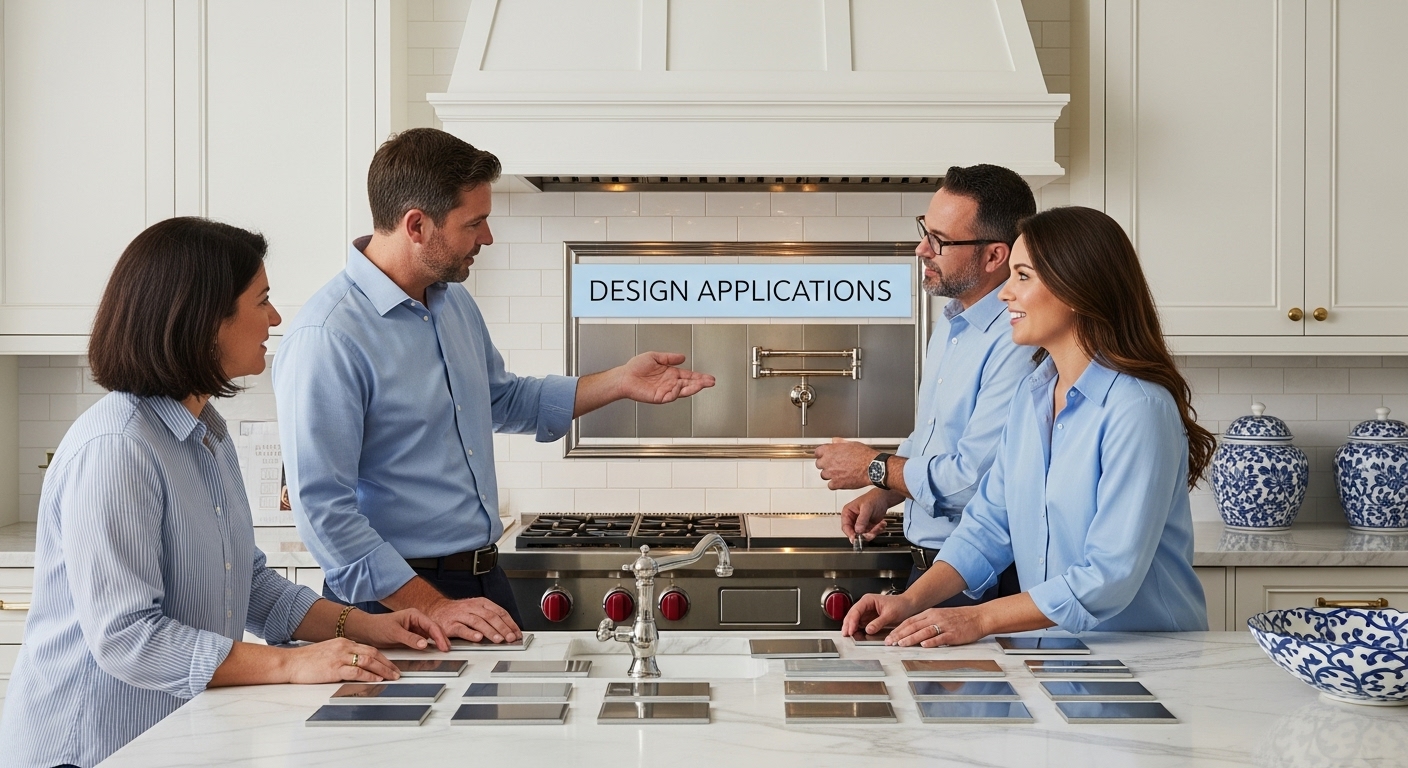
Elevate Your Space with Stunning Metallic Finish Tiles from TileChoices.com
Have you ever struggled to find tile solutions that deliver both eye-catching beauty and lasting durability? As explored in this comprehensive guide, metallic finish tiles not only transform surfaces with shimmering visual depth but also offer impressive resistance to wear and environmental challenges. Many homeowners and designers find it tough to balance trend-forward style with easy maintenance and robust performance. Metallic finishes address these pain points by creating striking focal points and functional surfaces that reflect light and enhance any room.
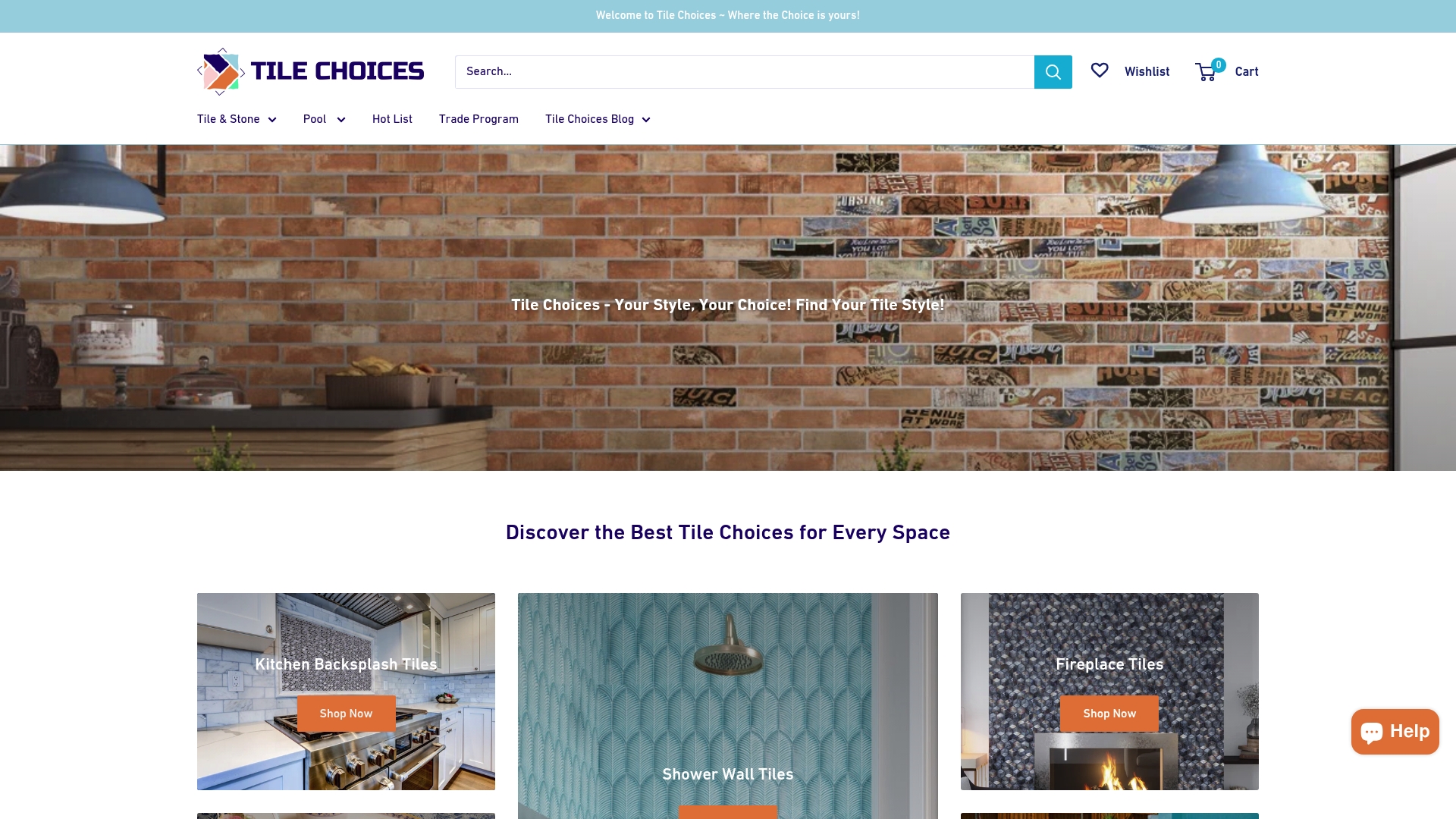
Ready to experience the magic of metallic finish tiles in your home or commercial space? Discover our vast selection of premium metallic finishes at TileChoices.com. While exploring, you can also learn more about different tile types and their manufacturing processes or find inspiration for high-traffic and specialty areas that blend durability and modern aesthetics. Shop now to give your next project the perfect blend of innovation and style. When you choose TileChoices.com, you get expert support, product samples, and secure ordering—everything you need to bring your vision to life today.
Frequently Asked Questions
What are metallic finish tiles made of?
Metallic finish tiles are typically made from ceramic, porcelain, or steel substrates that have been treated with advanced manufacturing techniques to incorporate metallic pigments or coatings. This allows for both aesthetic appeal and enhanced durability.
What are the benefits of using metallic finish tiles in design?
Metallic finish tiles offer a range of benefits, including dynamic lighting effects, enhanced durability, visual intrigue, and resistance to environmental degradation. They also provide design flexibility and can evoke sophisticated emotional responses in spaces.
How do metallic finish tiles affect interior aesthetics?
Metallic finish tiles manipulate light in unique ways, creating visual depth and dimensionality. They can make spaces appear larger and brighter, and their reflective properties can introduce subtle color shifts that enhance the overall design.
Can metallic finish tiles provide hygiene benefits?
Yes, certain metallic treatments, especially those that incorporate silver or copper nanoparticles, can offer inherent antimicrobial properties. This makes them a suitable choice for environments that require enhanced cleanliness and infection control.
Recommended
- Understanding Matte vs Glossy Tiles: Key Differences Explained – Tile Choices
- Understanding Glazed vs Unglazed Tiles: A Clear Guide – Tile Choices
- Understanding the Different Types of Floor Tiles – Tile Choices
- Understanding Porcelain vs Ceramic Tiles: A Comprehensive Guide – Tile Choices
- Understanding Copper vs Ceramic Cookware: Key Insights – Brass & Steel

